Q7:
AS & A Level Chemistry - 9701 Paper 1 2020 Summer Zone 1
Questions:
7/40

Topic: CH6 - ELECTROCHEMISTRY
Solution
Solution is B

PRACTISE
Similar Questions

LEARN
Concepts with Sparky

More Questions from this Topic
Theory
CH6 - ELECTROCHEMISTRY
Bismuth is an element in Group 15 of the Periodic Table.(a) Bismuth has metallic bonding.Draw a labelled diagram to show the metallic bonding in bismu...
2024
 Spring
Spring
 Spring
Spring
 4
4
Theory
CH6 - ELECTROCHEMISTRY
(a) A and B react together to give product AB.A + B → ABWhen the concentrations of A and B are both 0.0100 mol dm−3, the rate of formation of AB i...
2024
 Winter
Winter
 Winter
Winter
 3
3
Theory
CH6 - ELECTROCHEMISTRY
(a) Explain why transition elements form complex ions. .................................................................................................
2024
 Winter
Winter
 Winter
Winter
 3
3
Theory
CH6 - ELECTROCHEMISTRY
Potassium iodide, KI, is used as a reagent in both inorganic and organic chemistry.(a) KI forms an ionic lattice that is soluble in water.(i) Define e...
2024
 Spring
Spring
 Spring
Spring
 4
4
Theory
CH6 - ELECTROCHEMISTRY
(a) (i) Lithium nitrate, LiNO₃, decomposes on heating in a similar way to Group 2 nitrates to give the metal oxide, a brown gas and oxygen.Write an ...
2024
 Summer
Summer
 Summer
Summer
 3
3
Theory
CH6 - ELECTROCHEMISTRY
(a) (i) Define transition element........................................................................................................................
2024
 Summer
Summer
 Summer
Summer
 5
5
Theory
CH6 - ELECTROCHEMISTRY
(a) Equation 1 shows water acting as a Brønsted–Lowry acid. equation 1 \[ \text{H}_2\text{O} + \text{NO}_2^- \rightleftharpoons \text{HNO}_2 + \tex...
2024
 Spring
Spring
 Spring
Spring
 2
2
Theory
CH6 - ELECTROCHEMISTRY
(a) When a sample of hydrated lithium ethanedioate, $\text{Li}_2\text{C}_2\text{O}_4 \cdot \text{H}_2\text{O}$, is gently heated, two gaseous products...
2024
 Summer
Summer
 Summer
Summer
 2
2
Theory
CH6 - ELECTROCHEMISTRY
(a) Define standard electrode potential, $E^\text{o}$, including a description of standard conditions.(b) (i) An electrochemical cell is set up to mea...
2024
 Summer
Summer
 Summer
Summer
 3
3
Theory
CH6 - ELECTROCHEMISTRY
(a) The equation for reaction 1 is shown.reaction 1\qquad X \rightarrow 2YReaction 1 is first order with respect to the concentration of X. The half-l...
2024
 Winter
Winter
 Winter
Winter
 2
2
More Questions from year 2020
Theory
CH10 - GROUP 2
Group 2 metals form alkaline solutions in water.(a) (i) Write the equation for the reaction of calcium oxide with water..................................
2020
 Spring
Spring
 Spring
Spring
 2
2
Theory
CH11 - GROUP 17
(a) Describe the trend in the colour of the Group 17 elements down the group. ..........................................................................
2020
 Spring
Spring
 Spring
Spring
 1
1
Theory
CH17 - HYDROXY COMPOUNDS
(a) A series of reactions starting from glycerol is shown. (i) Suggest the reagent(s) and conditions for reaction 1. ....................................
2020
 Spring
Spring
 Spring
Spring
 2
2
Theory
CH12 - AN INTRODUCTION TO THE CHEMISTRY OF TRANSITION ELEMENTS
Iron is a transition element in the fourth period. Iron forms compounds containing the ions $\text{Fe}^{2+}$ and $\text{Fe}^{3+}$.(a) (i) Define the t...
2020
 Spring
Spring
 Spring
Spring
 3
3
Theory
CH10 - GROUP 2
(a) Group 2 metals form stable carbonates and sulfates.(i) State and explain the trend in the thermal stability of the Group 2 carbonates down the gro...
2020
 Spring
Spring
 Spring
Spring
 1
1
Theory
CH6 - ELECTROCHEMISTRY
Gold is an unreactive metal that can only be oxidised under specific conditions.(a) The standard electrode potential, $E^{\circ}$, of $\text{Au}^{3+}(...
2020
 Spring
Spring
 Spring
Spring
 1
1
Theory
CH14 - AN INTRODUCTION TO ORGANIC CHEMISTRY
Compound F has been found in small quantities in some cereals and dried fruit.(a) (i) Give the name of the functional groups labelled A and B.A .........
2020
 Spring
Spring
 Spring
Spring
 2
2
Theory
CH7 - EQUILIBRIA
Gallic acid, $C_7H_6O_5$, is a naturally occurring aromatic molecule. [Image_1: Structure of gallic acid] (a) Gallic acid contains the carboxylic ...
2020
 Spring
Spring
 Spring
Spring
 2
2
Theory
CH19 - CARBOXYLIC ACIDS AND DERIVATIVES
Valinol can be synthesised by the following reactions. Reaction 1 uses valine as the starting material. (a) (i) Write an equation for reaction 1, u...
2020
 Spring
Spring
 Spring
Spring
 2
2
MCQ
CH7 - EQUILIBRIA
Ethene can be oxidised to form epoxyethane, $C_2H_4O$.$$C_2H_4(g) + \frac{1}{2}O_2(g) \rightleftharpoons C_2H_4O(g) \quad \Delta H^\circ = -107 \text{...
2020
 Summer
Summer
 Summer
Summer
 2
2




 Share
Share




 Previous
Previous




